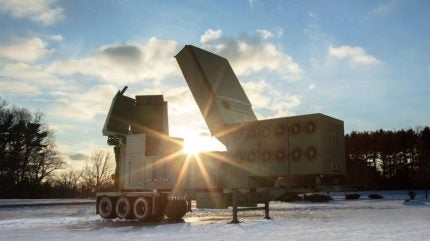Polish supplier to provide parts for American LTMADS radars

Raytheon has brought Poland’s state-owned defence company – Wojskowe Zakłady Elektroniczne (WZE) – into its supply chain as a subcontractor for the Lower Tier Air and Missile Defense Sensor (LTMADS).
The two signed an agreement on 3 September 2025, formalising the manufacturing location of the system’s energy storage assembly modules to be based in Central Europe.

Discover B2B Marketing That Performs
Combine business intelligence and editorial excellence to reach engaged professionals across 36 leading media platforms.
Find out more
In a company statement, Raytheon noted that WZE will be the first foreign supplier to contribute to the US Army’s future air and missile defence radars.
Poland is a major customer of US military kit; according to GlobalData, a data and analytics company, the United States provides just under 35% of Warsaw’s defence imports after South Korea, which supplies just shy of 50% of the Polish military imports. Notable American programmes include the M1A2 SEPv3 Abrams main battle tanks and F-35A multirole jets.
However, the latest industrial collaboration was founded on the basis that WZE contributes to Poland’s own LTMADS radar systems which feature in the nation’s WISŁA Phase 2 integrated air and missile defence (IAMD) programme. Raytheon’s deliveries for Phase 1 were supported by collaborative partnerships with Polish industry.
In August 2024, Raytheon was awarded a US Army contract valued at more than $2bn (7.2bn zlotys) to deliver radars for the US and Poland.
What is LTMADS?
The LTAMDS is a radar that specifically addresses aerial threat scenarios – massive, coordinated attacks that feature a mix of threats including ballistic and cruise missiles and drones.
This capability holds an important place in the arsenal of allies as the mass effect of Russian hybrid strikes, combining drones and missiles, regularly devastate Ukraine, its people, and critical national infrastructure.
On 29-30 August, Russia conducted another large-scale attack, the third combined strike with over 500 drones and missiles since the US-Russia summit in Alaska.
US Army’s IAMD vision
Last month, the US Army tested LTAMDS to detect, track and classify an air breathing threat surrogate target — air breathing meaning the use of oxygen in the air to propel itself — through the Integrated Battle Command System (IBCS).
The trial underscored the radar’s progress toward delivering full 360-degree coverage and enhanced operational flexibility to defend against a range of aerial threats.
Currently, the primary contractor is manufacturing eight LTAMDS radars annually, with plans to increase to 12 units per year.
In a speech on 8 August, Lieutenant General Sean A. Gainey, commanding general of US Army Space and Missile Defense, said the service will field LTMADS “replacing our workhorse” – the Patriot radar; Indirect Fire Protection Capability; and Maneuver-Short Range Air Defense.


